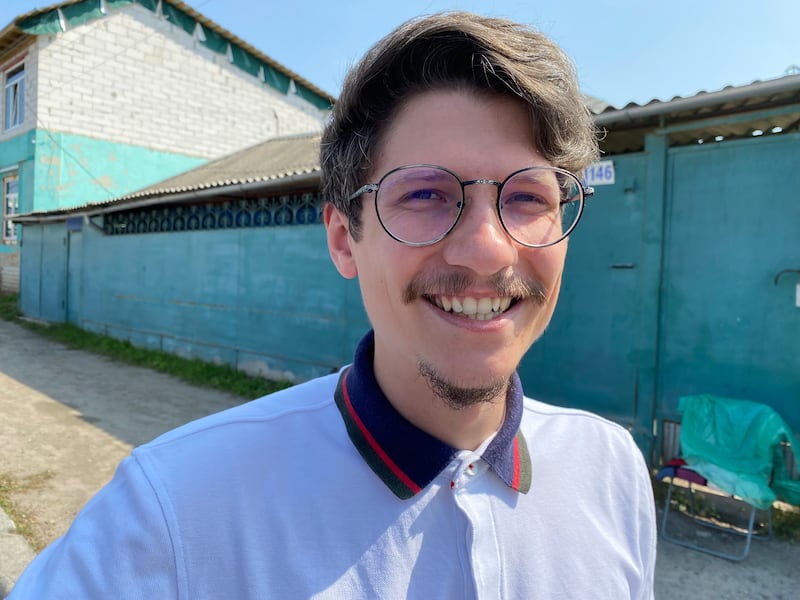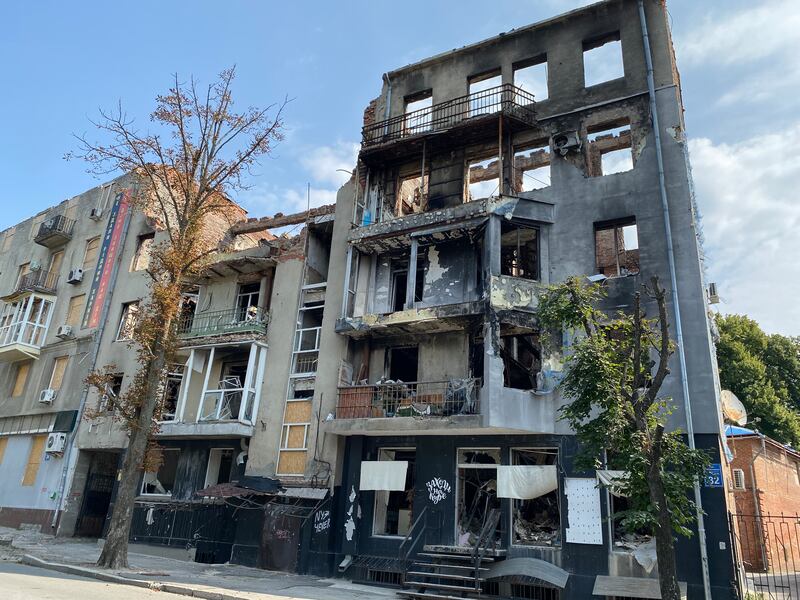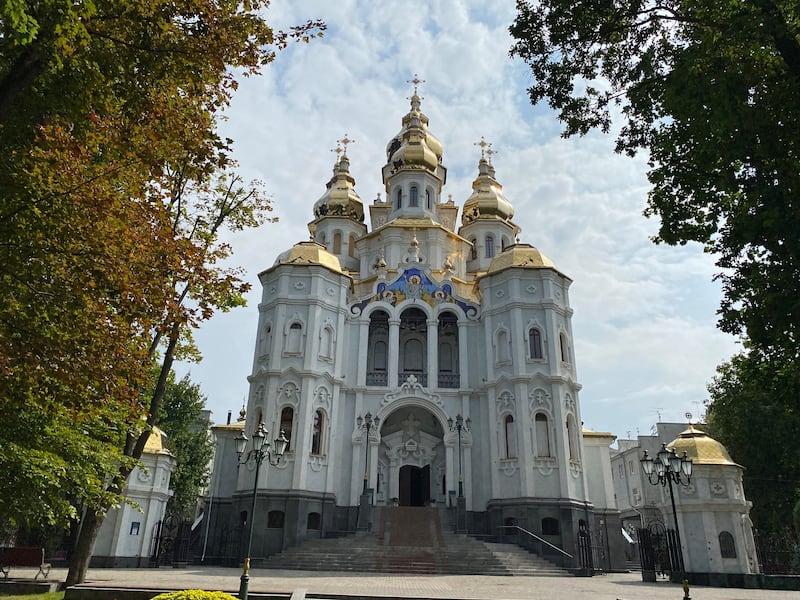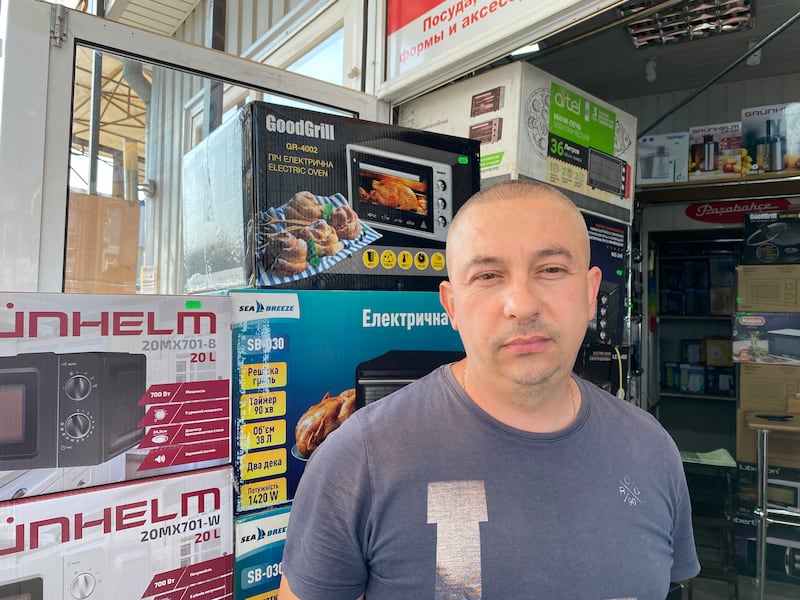Like much of Ukraine, Kharkiv is stuck in limbo for as long as the war lasts.
Ukraine’s second city, just 40km from the Russian border, nurses its trauma and struggles to plan for the future.
Kharkiv endured daily missile and artillery bombardments for the first six months of the full-scale invasion, as Russian forces massed in the suburbs sought to enter the city.
The railway station was inundated with fleeing refugees. More than 100,000 residents descended into grandiose, Soviet-era subway stations to live like troglodytes. When the Russians were finally driven out of the area one year ago, some people refused to return to the surface.
Russia praises Trump’s ‘understanding’ as Ukraine finalises new peace proposal
Regulator urged to consider inquiry into high electricity prices
Ukraine says fight for Pokrovsk continues as Russia claims Kyiv’s troops are surrounded
Drone sighting during Zelenskiy visit example of Russia’s hybrid attacks, says EU Council President
“We had missile attacks at regular hours every day,” recalls Marko Aharkov, a 24-year-old doctoral student in sociology who shows me around the city. “You received a five-second warning on [the encrypted social media channel] Telegram. Just time to say a quick prayer. Every day felt like the last day of your life, so people really hate Russia.”
A university town, Kharkiv was home to 200,000 Ukrainian students before the war, plus another 30,000 students from 150 countries. A little more than half of Kharkiv’s pre-war population of close to two million stuck it out or have returned.

The T4P (Tribunal for Putin) website has documented 6,954 civilian casualties, including deaths, woundings and disappearances, in greater Kharkiv between February 2022 and April 2023, the highest for any Ukrainian region. During the same period, Kharkiv and surrounding areas endured 405 missile attacks. Nearly 9,000 civilian buildings were destroyed.
Countless windows were shattered by explosions and boarded up with sheets of plywood, giving Kharkiv the feeling of a ghost town and at the same time a forward-looking, vibrant city. Many shops and restaurants are permanently closed, but the parks boast elaborate flower beds and well-dressed young people frequent the glittering Nikolsky shopping mall.
The British starchitect Norman Foster has offered to redesign postwar Kharkiv for free. He plans to run tunnels under the hilltop downtown, so that motorists travelling from the low-lying periphery can avoid the city centre.

I saw bags of cement stacked in the entrance of the once fashionable Koktelka restaurant and heard a drill buzzing inside. Aside from that, there was nary a sign of reconstruction. A mural on the plywood-boarded window outside shows a soldier shouldering an angelic troubadour, symbol of Ukrainian culture.
The street artist known as Hamlet, a sort of Ukrainian Banksy, volunteered to fight at the beginning of the war but the recruiter told him Kharkiv needed his paintings more. “Time hears us,” says a typically cryptic Hamlet graphic in a collapsed building on Freedom Street.
The Russians destroyed the regional council building on Freedom Square with Kalibr cruise missiles on March 1st, 2022, killing 27 people. Aharkov shows me a video of the stately headquarters engulfed in an orange bubble. The tall fur trees that surrounded the council were incinerated. We walk on new, black asphalt used to fill the craters.

That missile strike occurred five minutes before a meeting that was to have been attended by Oleh Synyehubov, the head of the regional military administration. An informer had tipped off the Russians. Synyehubov escaped. All meetings since have been held in underground shelters.
The Russians pulled back but they didn’t go away. Drone and missile attacks still happen. “You haven’t heard an explosion yet?” Aharkov asks, feigning incredulity. “Then you haven’t really seen Kharkiv.”
When Aharkov married his fiancee Krystyna last year, they travelled to a resort on the western side of the country, near Lviv. “It was great for our family and friends, to get away to someplace safer,” he says. “The most difficult things for me were the missile strikes on the regional council, because it was the main administrative building, and the faculty where I studied for four years,” he says. “We understood the Russians really wanted to destroy us.”

The Barabashovo open-air market was the largest in Europe. About five hectares of its eight-hectare surface were destroyed by the Russian bombardment, shopkeeper Serhiy Prokopenko tells me. Foster has a plan to rebuild Barabashovo too.
In the meantime, the market is a desolate place. Some merchants say they have lost three-quarters of their business. Until 2014, Prokopenko says, his best customers travelled from Russia and Donbas to buy better quality, cheaper goods at Barabashovo.
[ Ukraine claims gains in southeast as Russia attacks Kharkiv regionOpens in new window ]
Prokopenko’s mother is Russian, but he has cut all ties with her family. “My mother’s siblings rang her only once after the full-scale invasion. They told her the Ukrainians were bombing themselves.”
















